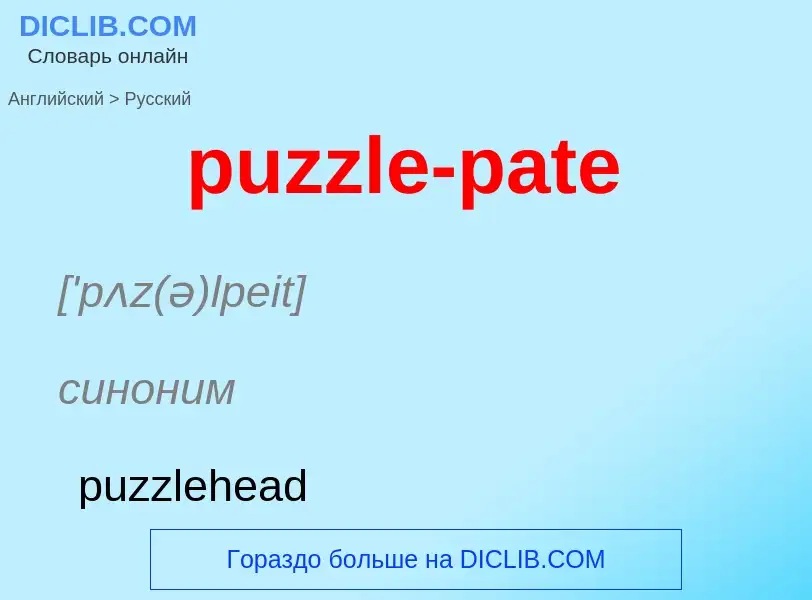Translation and analysis of words by ChatGPT artificial intelligence
On this page you can get a detailed analysis of a word or phrase, produced by the best artificial intelligence technology to date:
- how the word is used
- frequency of use
- it is used more often in oral or written speech
- word translation options
- usage examples (several phrases with translation)
- etymology
puzzle-pate - translation to russian
['pʌz(ə)lpeit]
синоним
Definition
Wikipedia
Pâte-sur-pâte is a French term meaning "paste on paste". It is a method of porcelain decoration in which a relief design is created on an unfired, unglazed body, usually with a coloured body, by applying successive layers of (usually) white porcelain slip (liquid clay) with a brush. Once the main shape is built up, it is carved away to give fine detail, before the piece is fired. The work is very painstaking and may take weeks of adding extra layers and allowing them to harden before the next is applied.
The usual colour scheme is a white relief on a contrasting coloured background, which in England was often Parian ware. The effect is somewhat similar to other types of relief decoration, in particular sprigging. However, unlike Jasperware, for example, a mould is not normally used, and the ceramic artist is able to achieve translucency. The method also gives results resembling cameos in stone or cameo glass.
The development of pâte-sur-pâte dates back to 1850 in France, and an accident that occurred at the Manufacture nationale de Sèvres. The company was trying to reproduce a decorative technique from a Chinese vase, but misinterpreting the vase, the experiment took them along a different path from the Chinese potter. They perfected what became known as pâte-sur-pâte.
Marc-Louis Solon took the style to England, and others to Germany and Austria. The period within 15 years either side of 1900 was the heyday of the technique. Many pieces made in the State, formerly Imperial Porcelain Factory in Leningrad after World War II are said to use it, but are perhaps sprigged, then hand-finished. Bronislav Bystrushkin designed many, mostly using the classic Jasperware "Wedgwood blue" and white.

![[[Berlin porcelain]] plate, 1900. [[Berlin porcelain]] plate, 1900.](https://commons.wikimedia.org/wiki/Special:FilePath/Zierteller KPM KGM W-1979-13.jpg?width=200)
![[[Mintons]] vases with cranes, 1871-1875 [[Mintons]] vases with cranes, 1871-1875](https://commons.wikimedia.org/wiki/Special:FilePath/Vase (England), 1871-1875 (CH 18633979-2).jpg?width=200)
![Solon plaque of Tree Spirits, 1880; made by [[Mintons]] for [[Tiffany & Co]] Solon plaque of Tree Spirits, 1880; made by [[Mintons]] for [[Tiffany & Co]]](https://commons.wikimedia.org/wiki/Special:FilePath/Plaque with Tree Spirits LACMA AC1995.98.2.1-.2.jpg?width=200)
![Leningrad coffee pot, with [[Ruslan and Ludmila]], c. 1969 Leningrad coffee pot, with [[Ruslan and Ludmila]], c. 1969](https://commons.wikimedia.org/wiki/Special:FilePath/Bistr chainik sadko.jpg?width=200)







